Tunas are flexible, high-performance open ocean swimmers that operate at high frequencies to achieve high swimming speeds. Most fish-like robotic systems operate at low frequencies (≤3 Hz) resulting in low swim speeds (≤1.5 body lengths per second), and the cost of transport (COT) is often one to […]
UAB School of Medicine, Alabama
The Department of Cell, Developmental and Integrative Biology in the school of University of Alabama Birmingham received nearly $17 million from the National Institute of Health (NIH) due to the fact that they are responsible for dramatic improvements in the health and well-being of citizens of Alabama, the United States and the world.
Center for Advanced Vehicular Systems, Arizona State University
Bio-inspired design uses principles in nature to develop new designs. At CAVS, we are employing bio-inspired design to develop light-weighted and impact-resistant vehicles, armor and sports gear. Instead of replicating the biological entity itself, CAVS researchers imitate and apply the design principles of […]
When biomimicry is applied to the fashion industry, inspiration goes beyond the look of the clothing. Whether it’s from the NikwaX fabric that mimics animal fur, the orange fiber fabrics that mimic yarn, or the specially designed Brewed Protein materials that allow for […]
Bio inspired computing
With the explosion of data generation, getting optimal solutions to data-driven problems is increasingly becoming a challenge, if not impossible. It is increasingly being recognized that applications of intelligent bio-inspired algorithms are necessary for addressing highly complex problems to provide working solutions in time, especially with dynamic problem definitions, fluctuations in […]
This research paper discusses flapping micro-air vehicles that are inspired by bio design. The wings flap in counter phase. This is inspired by the idea that flapping wings are superior to flight than other flying mechanisms. “Stable flight at speeds between 2 and 5ms–1 has been demonstrated, and the models are essentially stall-proof while under […]
Harvard Biodesign Lab, Cambridge
The Harvard Biodesign Lab brings together researchers from the engineering, industrial design, medical, and business communities to develop robots and smart medical devices that are specifically intended for interacting and cooperating with humans. Our work is accomplished through new approaches to design and fabrication of actuation and sensing components (e.g. using […]
Biomimicry Switzerland, Global
Biomimicry Switzerland is an Association of practitioners in or from Switzerland working to translate the genius of the natural world into human innovation and problem solving. We are based in the Interlaken area, Zürich, Lausanne and internationally. Our mission is to empower humanity to learn and apply the greatest lessons from […]
News, How the Brainless Slime Mold Stores Memories
Slime molds, which are not actually fungi but cousins of single-celled amoebas, are goopy organisms that can find their way through a maze and remember the location of food—all without the benefit of a brain or nervous system. Now, new research brings us a step closer to understanding how exactly these […]
Abstract: This study aims to minimize the noise generated by automobile cooling fans. Fan blade structures with ridged surfaces based on bio-inspired principles are 3D printed and used to replace the conventional fan blades. The effect of the bio-inspired ridge structures on the […]
A team of researchers from China and the U.S. has created a robot that is able to mimic a remora fish by adhering quickly and strongly to underwater objects. It has a fin on its head that has evolved to become a suction cup, allowing it to […]
A wide range of microorganisms, e.g. bacteria, propel themselves by rotation of soft helical tails, also known as flagella. Due to the small size of these organisms, viscous forces overwhelm inertial effects and the flow is at low Reynolds number. In this fluid-structure problem, a competition between elastic forces and hydrodynamic […]
To manoeuvre in air, flying animals produce asymmetric flapping between contralateral wings. Unlike the adjustable vertebrate wings, insect wings lack intrinsic musculature, preventing active control over wing shape during flight. However, the wings elastically deform as a result of aerodynamic and inertial forces generated by the flapping […]
A research team led by the University of Washington has developed Smellicopter: an autonomous drone that uses a live antenna from a moth to navigate toward smells. Smellicopter can also sense and avoid obstacles as it travels through the air. The team published these results Oct. 1 in the journal IOP […]
To better model the structure and performance of human muscles, researchers are using silkworm silk to grow muscle cells aligned in 3-dimensional space. Previously, muscle cells were grown on flat 2D petri dishes, which did not allow muscle cells to align accurately and led to poorer model muscle cell performance. Muscle […]
Fungi have proven to be very biologically useful for humans, as their variety allows for new discoveries to continuously be made about them, providing constant opportunities for a discovery that may lead to a very useful product. However, an issue has arisen in that scientists are now […]
The UCLA Biodesign Fellowship is an exciting year-long entrepreneurial opportunity starting in Summer 2021 for experienced professionals in medicine, nursing, engineering, design, and business. We’re bringing together a best-in-class interdisciplinary team to prototype and develop technologies to solve challenging health care needs. As a UCLA Biodesign Fellow, you will interface with faculty from UCLA’s Schools […]
In this study, lotus leaf flavonoids (LLF) were applied to human lung cancer A549 cells and human small cell lung cancer cells H446 in vitro to verify the effect of LLF on apoptosis in these cells through the ROS/p38 MAPK pathway.
The aerodynamic designs of winged drones are optimized for specific flight regimes. Large lifting surfaces provide maneuverability and agility but result in larger power consumption, and thus lower range, when flying fast compared with small lifting surfaces. Birds like the northern goshawk meet these opposing aerodynamic requirements of aggressive flight in […]
Kraig Biocraft Laboratories, Inc. (Trading Symbol: KBLB) is an innovative and aggressive biotechnology company focused on the development and commercialization of spider silk. Based on proprietary genetic engineering technology, Kraig Labs has successfully developed and produced next-generation polymers and protein-based fibers including recombinant spider silk. Our work has recently succeeded in […]
Remora Fish Attachment Mechanisms
The remora fishes are capable of adhering to a wide variety of natural and artificial marine substrates using a dorsal suction pad. The pad is made of serial parallel pectinated lamellae, which are homologous to the dorsal fin elements of other fishes. Small tooth-like projections of mineralized tissue from the dorsal […]
This paper investigates the aerodynamics of the boxfish to discover if the boxfish shape can be adapted for achieving low drag and energy efficient motor vehicle design. Through the usage of CAD modeling and CFD modeling data, this data proved that indicates that the drag coefficient of a boxfish is around […]
Abstract: Falls and subsequent complications are major contributors to morbidity and mortality, especially in older adults. Here, by taking inspiration from claws and scales found in nature, we show that buckling kirigami structures applied to footwear outsoles generate higher friction forces in the forefoot and transversally to […]
Soft machines typically exhibit slow locomotion speed and low manipulation strength because of intrinsic limitations of soft materials. Here, we present a generic design principle that harnesses mechanical instability for a variety of spine-inspired fast and strong soft machines. Unlike most current soft robots that are designed […]
News, Stanford researchers discover the ‘anternet’
On the surface, ants and the Internet don’t seem to have much in common. But two Stanford researchers have discovered that a species of harvester ants determine how many foragers to send out of the nest in much the same way that Internet protocols discover how much […]
Students from all schools may obtain a certificate in biologically inspired design from Georgia Tech. Students must take BIOS/ISyE/MSE/ME 4740-Bio-Inspired Design in addition to 9hrs from the list below. Each certificate requires 12 credit hours of approved courses from that certificate’s list, at least 9 of which […]
Paper, Chiton scale-inspired flexible armor
Chiton scales which are rigid when necessary in order to protect the chiton from attacks or obstacles are also simultaneously able to be flexible, hence making for a great bio-inspired design. In this paper, a design for armor, specifically knee armor, due to […]
Flexible natural armors from fish, alligators or armadillo are attracting an increasing amount of attention from their unique and attractive combinations of hardness, flexibility and light weight. In particular, the extreme contrast of stiffness between hard plates and surrounding soft tissues give rise to unusual and attractive mechanisms, which now serve […]
A team at MIT has engineered small coils lined with living cells, that they say could act as stretchy scaffolds for repairing damaged muscles and tendons. The coils are made from hundreds of thousands of biocompatible nanofibers, tightly twisted into coils resembling miniature nautical rope, or yarn. The researchers coated the […]
We aim to develop micro-scale robotic systems that can demonstrate insect-like locomotive capabilities in aerial, aquatic, and terrestrial environments. To design highly agile, multifunctional, and robust micro-scale robots, we work on (1) develop high bandwidth and robust soft actuators and active materials for […]
In this article, we report the observation of an air-encapsulating elastic mechanism of Dandelion spherical seed heads, namely blowballs, when submerged underwater. This peculiarity seems to be fortuitous since Taraxacum is living outside water; nevertheless, it could become beneficial for a better survival under critical conditions, e.g. of temporary flooding. The […]
The news article highlights and displays 7 examples of Biomimicry and solutions to human challenges by emulating designs and ideas found in nature. Examples include Bullet trains inspired by Kingfisher birds, Wind turbines modeled after Humpback whales, Antimicrobial film mimicking sharkskin, Harvesting water like the Stenocara beetle, Absorbing shock like a […]
About Connections
Team Connections. Before most Monday classes, design teams will add a Connection to share Bioinspired Design connections. These URLs can include relevant design or biology courses on campus; links to campus organizations, clubs, institutes and competitions interested in design; biological discoveries and bioinspired designs from news and journals; global research, centers, and institutes; and internships, public service, […]
Learn about our two Decals!
 Click here to find out more about our Fall Bioinspired Design Decal and our Spring Bioinspired Design in Action Decal – ALL MAJORS are welcome.
Click here to find out more about our Fall Bioinspired Design Decal and our Spring Bioinspired Design in Action Decal – ALL MAJORS are welcome.Berkeley BioDesign Community
 Click here to learn about the BioD: Bio-Inspired Design @ Berkeley student organization or here to signup for more info.
Click here to learn about the BioD: Bio-Inspired Design @ Berkeley student organization or here to signup for more info.Search
Student Login




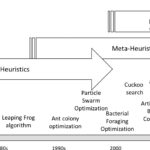
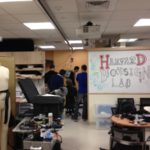
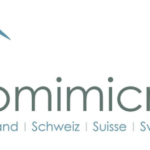

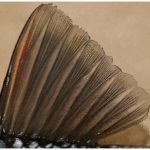

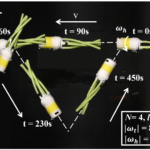



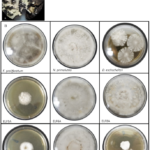

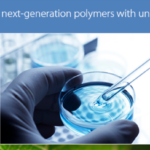


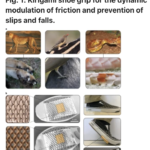
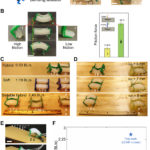
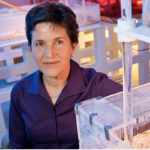


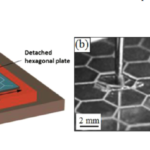
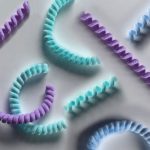
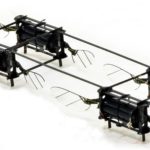

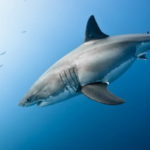


I imagine that the neurological circuits underlying these processes are governed by both 2d spacing maps with their brains as…
to reduce the impact of car accidents, it may be possible to study the force diverting physics of cockroaches to…
you see this type of head-bobbing stability in many avian creatures related to pigeons like chickens. the head ability to…
not like they taught horses how to run! this is an example of convergent evolution where both sea creatures and…
The brain functions in a similar way with neuronal connections. our brains are able to utilize the multiplicity of connections…